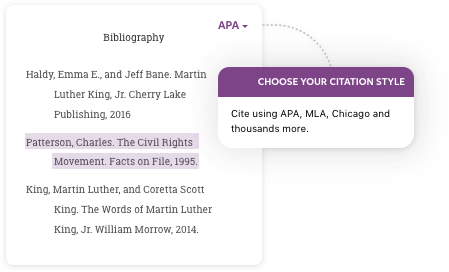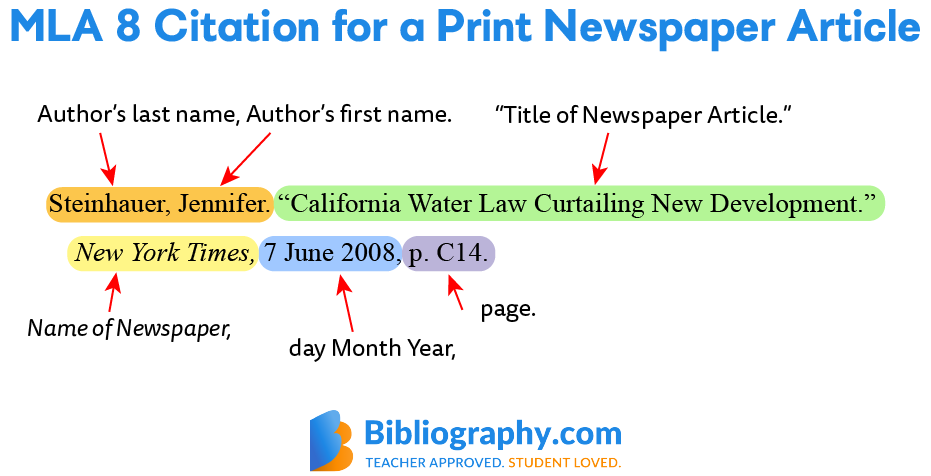When it comes to academic and professional work, visuals play a crucial role in enhancing our arguments and ideas. However, using images comes with its own set of rules and ethical considerations, particularly around citation. "How to Properly Cite Getty Images for Academic and Professional Use" is a topic that’s essential for anyone looking to include images responsibly in their work. In this blog post, we’ll dive into the nuances of image citation, ensuring you know not just how to credit Getty Images, but why it's so important to get it right.
Understanding the Importance of Image Citation

Citing images is more than just a mere formality; it's a practice that holds a multitude of benefits, both academically and ethically. Let's break down why understanding how to properly cite Getty Images is essential.
- Respect for Copyright: Most images, including those found on Getty, are protected by copyright laws. By citing them, you're acknowledging the creator's rights and adhering to legal standards. This respect goes a long way in the academic and professional world.
- Credibility Enhancement: Including well-cited images can bolster the credibility of your work. It shows that you have conducted thorough research and are committed to upholding the integrity of your findings.
- Academic Integrity: Plagiarism isn’t just about text; failing to credit images is a form of intellectual theft. Proper citation demonstrates your commitment to academic honesty.
- Research Accuracy: Citations allow others to trace back to the original source for further research. If someone likes what they see and wants to learn more, your citation serves as a helpful guide.
- Professionalism: In professional settings, proper citation reflects well on you as it showcases your attention to detail and adherence to industry standards. This can be especially vital in fields like marketing, journalism, and academia.
To sum it up, image citation is an important practice that involves legal, ethical, and practical dimensions. By understanding this aspect, you set a solid foundation for your work and contribute positively to your field.
Also Read This: Understanding Getty Images Image Acquisition Process
3. Different Citation Styles and Their Requirements

Citing images properly is crucial to maintaining academic integrity and giving credit to creators. However, the requirements change depending on the citation style you’re using. Here’s a quick breakdown of some common styles and their unique requirements:
- APA (American Psychological Association)
- Author's name (if available)
- Year of publication
- Title of the image (italicized)
- Source URL
Example: Author, A. A. (Year). Title of work. Retrieved from URL
- MLA (Modern Language Association)
- Artist’s name (if available)
- Title of the work (italicized)
- Year of publication
- Institution (if applicable)
- Repository URL
Example: Artist, First Name. Title of Work. Year, Institution, URL.
- Chicago Style
- Artist’s name (if available)
- Title of the work (italicized)
- Medium of the work
- Year of creation
- Institution (if applicable)
- URL
Example: Artist Last Name, First Name. Title of Work. Medium, Year. Institution, URL.
Always consult the specific style guide for detailed instructions, as formats can evolve over time. So, it’s key to keep updating your knowledge!
Also Read This: Order History Eradication: How to Delete Order History from Flipkart
4. Step-by-Step Guide to Citing Getty Images
Citing Getty Images might seem daunting at first, but breaking it down into a step-by-step guide can make it a breeze. Here’s how you can do it:
- Locate the Image
Start by finding the Getty Image that you want to use. Note down the complete image title and the name of the photographer or creator, if available.
- Check License Information
Ensure you understand the licensing details of the image. Some might require you to pay for usage or have specific attribution guidelines.
- Gather Required Information
This typically includes:
- Photographer's name
- Title of the image
- Date of publication
- Source URL
- Use the Appropriate Citation Style
Apply the guidelines of the citation style you're using. Make sure to format everything correctly!
- Include in Your Work
Add the citation to your bibliography or works cited page as per your chosen style guide specifications.
And voila! You've properly cited a Getty Image for your academic or professional work. Remember, giving credit is not just about following rules; it’s about respecting the creativity and effort of the original creators.
Also Read This: How to Purchase a Royalty-Free License for Getty Images
Common Mistakes to Avoid in Image Citation
Citing images may seem straightforward, but it’s easy to slip up. Here are some common mistakes to be wary of that can misrepresent your work and cause issues down the line.
- Neglecting Copyright Information: One of the biggest blunders people make is forgetting to include the copyright holder's information. This can lead to legal complications. Always check if you have the correct copyright details.
- Inconsistent Formatting: Each citation style has specific formatting rules. Inconsistent citations can confuse your readers or give the impression of carelessness. Stick to one citation style throughout your document.
- Wrong Attribution: Make sure you attribute images to the correct source. Mixing up credits can mislead readers, and copyright holders might not appreciate it.
- Forgetting the URL: If you're citing online images, make sure to include the direct URL. This allows readers to access the image easily while also demonstrating transparency in your research.
- Overlooking Permissions: Just because an image appears on the internet doesn’t mean it’s free to use. Always check the licensing terms and obtain permissions when necessary.
Avoiding these common pitfalls will ensure that your image citations are not just accurate but also ethical, showcasing your professionalism and respect for the creators' rights.
Also Read This: Gift Wrap Glamour: Exploring How Flipkart Gift Wrap Looks
Best Practices for Using Getty Images Legally
When using Getty Images, it's crucial to adhere to legal guidelines to avoid copyright infringement and ensure proper usage. Here are some best practices you should always keep in mind:
- Purchase the Right License: Before using any Getty Image, ensure you have the appropriate license. They offer different types of licenses depending on how you plan to use the image—commercial, editorial, or personal.
- Review Usage Guidelines: Each image comes with specific usage rights. Familiarize yourself with these terms to avoid any legal trouble, particularly if you plan to use the image in marketing materials or public displays.
- Give Credit Where It's Due: Always provide proper attribution to Getty Images. This can include the image creator's name and the source, ensuring credits are clear and visible alongside the image.
- Use Watermarked Images for Personal Use: If you’re seeking inspiration or educational purposes, it’s fine to use watermarked images, but always refresh them with proper licensing for any formal project.
- Notify Getty for Any Issues: If you find an image that seems to be misused or misattributed, notify Getty Images. This helps maintain the integrity of their licensing and assists fellow users.
By following these best practices, you can use Getty Images legally and ethically, respecting the rights of creators while enhancing the quality of your work.
How to Properly Cite Getty Images for Academic and Professional Use
Citing images, especially from reputable sources like Getty Images, is essential for maintaining academic integrity and giving proper credit to artists and photographers. Understanding how to properly cite these images not only enhances the credibility of your work but also respects copyright laws and the intellectual property rights of the creators.
Here are the key steps for properly citing Getty Images:
- Identify the Image: Gather all necessary information about the image including the title, creator’s name, and date of publication.
- Choose a Citation Style: Select the appropriate citation style based on your academic or professional requirements. Common styles include MLA, APA, and Chicago.
- Include Necessary Details: In your citation, make sure to include the following details:
- Photographer/Artist's Name
- Title of the Image
- Date of Creation
- Source (Getty Images)
- URL
- Format Your Citation: Follow the specific format for the citation style you’re using. Here are examples for APA and MLA:
| Citation Style | Example Citation |
|---|---|
| APA | Smith, J. (2020). Sunset over ocean. Getty Images. https://www.gettyimages.com/sunset-over-ocean |
| MLA | Smith, John. “Sunset over ocean.” Getty Images, 2020, www.gettyimages.com/sunset-over-ocean. |
Following these guidelines ensures that you give complete credit to the creators of images and reinforce the academic rigor of your work.
In conclusion, proper citation of Getty Images not only safeguards against plagiarism but also acknowledges the invaluable contributions of artists and photographers, providing a solid foundation for your academic and professional endeavors.
 admin
admin








